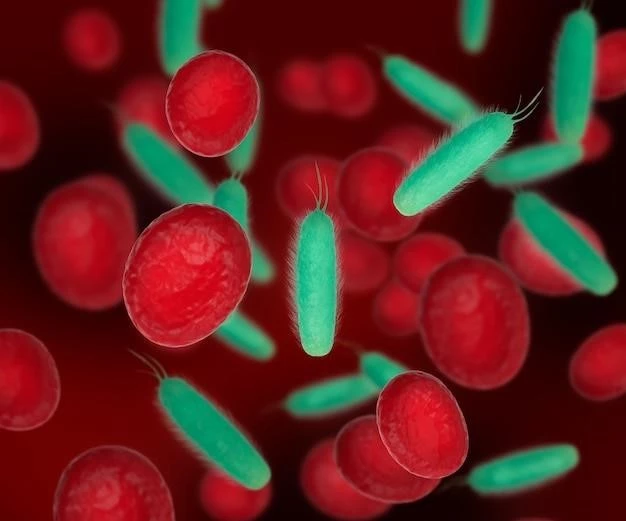Disease ⎻ Hemoglobinopathy
Introduction
Hemoglobinopathy is a group of genetic disorders affecting hemoglobin, the protein responsible for carrying oxygen in red blood cells. These disorders result from mutations in the genes that encode hemoglobin. Hemoglobinopathies are inherited conditions that can lead to abnormal hemoglobin production, affecting the structure and function of red blood cells.
The most common hemoglobinopathies include sickle cell disease and thalassemia. These disorders can cause a range of symptoms, from mild to severe, impacting the quality of life of affected individuals. Understanding the genetic basis and the impact of abnormal hemoglobin is crucial for diagnosis and management.
In this article, we will explore the fundamentals of hemoglobin, the role of red blood cells in oxygen transport, the link between gene mutations and hemoglobinopathies, the different types of hemoglobin disorders, inherited patterns, consequences of abnormal hemoglobin, protein abnormalities, as well as diagnosis and treatment options available for individuals with hemoglobinopathies.
Understanding Hemoglobin
Hemoglobin is a vital protein found in red blood cells, responsible for transporting oxygen from the lungs to tissues throughout the body and carrying carbon dioxide back to the lungs for exhalation. This iron-containing protein gives blood its red color and plays a crucial role in maintaining oxygen balance.
Each hemoglobin molecule consists of four protein subunits⁚ two alpha-globin and two beta-globin chains. The heme group within hemoglobin binds oxygen molecules in the lungs and releases them in tissues with lower oxygen levels. The efficient functioning of hemoglobin is essential for overall health and well-being.
Changes or mutations in the genes encoding hemoglobin can lead to structural abnormalities in the protein, affecting its ability to bind oxygen effectively. These alterations can result in hemoglobinopathies, disrupting the oxygen-carrying capacity of red blood cells and potentially causing a range of symptoms associated with oxygen deprivation in tissues.
Red Blood Cells n Oxygen Transport
Red blood cells (RBCs), also known as erythrocytes, play a critical role in the transport of oxygen from the lungs to tissues and organs throughout the body. The primary function of RBCs is to deliver oxygen to cells and remove carbon dioxide, a waste product of cellular respiration.
Within the RBCs, hemoglobin molecules bind to oxygen in the lungs due to their high oxygen affinity. As blood circulates through the body, hemoglobin releases oxygen to tissues with lower oxygen levels, facilitating cellular respiration and energy production. Carbon dioxide is then carried back to the lungs for elimination.
In individuals with hemoglobinopathies, the structural abnormalities in hemoglobin can impair the oxygen-carrying capacity of RBCs. This can lead to tissue hypoxia, where cells do not receive an adequate amount of oxygen, resulting in symptoms such as fatigue, shortness of breath, and organ damage in severe cases.
Gene Mutation and Hemoglobinopathy
Hemoglobinopathies result from mutations in the genes responsible for producing hemoglobin. These genetic changes can affect the structure, function, or production of hemoglobin molecules, leading to abnormal hemoglobin variants. The inheritance of these mutated genes can predispose individuals to hemoglobin disorders.
Gene mutations associated with hemoglobinopathies can be inherited from one or both parents, following different patterns such as autosomal recessive or dominant inheritance. Mutations in the globin genes, particularly the HBA1, HBA2, HBB, and HBD genes, are common causes of hemoglobin disorders.
Alterations in these genes can result in the production of abnormal hemoglobin variants like hemoglobin S in sickle cell disease or hemoglobin E in hemoglobin E disease. These variants may have different oxygen-binding properties or stability, leading to diverse clinical manifestations and complications.
Types of Hemoglobinopathies
There are several types of hemoglobinopathies, each characterized by specific genetic mutations that affect hemoglobin production. Sickle cell disease, the most well-known hemoglobinopathy, is caused by a mutation in the HBB gene, leading to the production of abnormal hemoglobin S.
Thalassemia is another common hemoglobin disorder characterized by reduced synthesis of one or more globin chains, such as alpha or beta globin. This results in an imbalance of globin chains, leading to ineffective hemoglobin production and abnormal red blood cell function.
Other hemoglobinopathies include hemoglobin C disease, hemoglobin E disease, and hemoglobin D disease, each caused by specific mutations in the globin genes. These variants can impact the structure, stability, and oxygen-carrying capacity of hemoglobin, leading to clinical manifestations ranging from mild anemia to severe complications.
Inherited Disorders
Hemoglobinopathies are inherited disorders passed down from parents to their children through genetic mutations in the hemoglobin genes. The inheritance pattern of hemoglobin disorders can vary, with some conditions requiring two copies of the mutated gene (autosomal recessive) and others manifesting with just one copy (autosomal dominant).
Individuals with a family history of hemoglobinopathies are at an increased risk of inheriting the mutated genes and developing the associated disorders. Genetic counseling and testing can help assess the likelihood of passing on these conditions to offspring and provide information about the risks and implications of carrier status.
The prevalence of hemoglobinopathies varies among populations, with certain regions showing a higher frequency of specific variants. Understanding the inheritance patterns and genetic predisposition to hemoglobin disorders is crucial for early detection, intervention, and management of affected individuals and their families.
Impact of Abnormal Hemoglobin
Abnormal hemoglobin resulting from gene mutations in hemoglobinopathies can have a significant impact on red blood cell function and overall health. The altered structure of hemoglobin variants can affect the oxygen-carrying capacity of red blood cells, leading to tissue hypoxia and various clinical symptoms.
In conditions like sickle cell disease, the presence of hemoglobin S causes red blood cells to assume a sickle shape under low oxygen conditions, leading to clumping, blockages in blood vessels, and organ damage. This can result in episodes of pain, anemia, increased susceptibility to infections, and long-term complications affecting multiple organ systems.
Thalassemia, on the other hand, results in reduced hemoglobin production, leading to anemia and ineffective oxygen delivery to tissues. Individuals with thalassemia may experience fatigue, weakness, pale skin, and complications related to chronic red blood cell breakdown or iron overload from treatments such as blood transfusions.
Protein Abnormality in Hemoglobinopathy
Hemoglobinopathies involve protein abnormalities resulting from genetic mutations affecting the structure and function of hemoglobin. These mutations can lead to the production of abnormal hemoglobin variants with altered properties, influencing oxygen binding, release, and overall stability of the protein.
Protein abnormalities in hemoglobinopathies can impact the shape of red blood cells and their ability to effectively transport oxygen throughout the body. Variants like hemoglobin S in sickle cell disease or hemoglobin E in hemoglobin E disease exhibit different behaviors compared to normal hemoglobin, contributing to the diverse clinical manifestations seen in these disorders.
The altered protein structure in hemoglobin variants can also affect the lifespan of red blood cells, leading to hemolysis (the premature breakdown of red blood cells) in conditions like thalassemia. Understanding the protein abnormalities associated with hemoglobinopathies is essential for diagnosing and managing these complex genetic disorders.
Diagnosis and Treatment
Diagnosing hemoglobinopathies typically involves a combination of tests to assess hemoglobin levels, identify abnormal hemoglobin variants, and determine the specific genetic mutations present. Blood tests, such as hemoglobin electrophoresis or high-performance liquid chromatography, can help pinpoint the type and quantity of abnormal hemoglobin in the blood.
Genetic testing may be used to detect specific mutations in the globin genes associated with hemoglobin disorders. Prenatal testing can also be conducted to assess the risk of passing on hemoglobinopathies to offspring or to initiate early interventions in affected pregnancies.
Treatment for hemoglobinopathies aims to manage symptoms, prevent complications, and improve quality of life. Options may include blood transfusions to alleviate anemia, medications to reduce the risk of complications like vaso-occlusive crises in sickle cell disease, bone marrow transplantation for severe cases, and supportive care to address specific symptoms.
Conclusion
In conclusion, hemoglobinopathies are genetic disorders characterized by mutations in the hemoglobin genes, leading to the production of abnormal hemoglobin variants. These variants can affect the structure, function, and stability of hemoglobin, impacting the oxygen-carrying capacity of red blood cells and overall health.
Understanding the genetic basis of hemoglobinopathies, the types of abnormal hemoglobin variants, and the inheritance patterns of these disorders is essential for accurate diagnosis and appropriate management. Early detection, genetic counseling, and advances in treatment options have improved outcomes for individuals living with hemoglobinopathies.
By raising awareness, promoting genetic screening, and enhancing access to comprehensive care, healthcare providers and researchers can continue to make strides in the field of hemoglobinopathy management. With ongoing research and collaborative efforts, we can strive to improve the quality of life for individuals affected by these complex inherited disorders.

